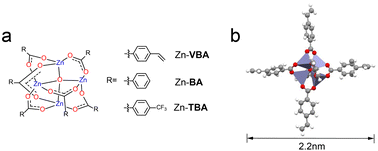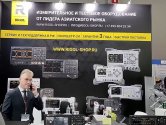China (Chinese equipment an material companies) pumps $7bn into upgrading chip supply chain
Government and industry work together amid U.S. tech export restrictions
GUANGZHOU -- Chinese chipmaking suppliers plan to spend 50 billion yuan ($7.26 billion) with backing from the state to strengthen the domestic supply chain as the U.S. curbs tech exports.
"We cannot avoid decoupling in semiconductors," Chiu Tzu-Yin, president of state-backed wafer giant National Silicon Industry Group (NSIG), said at a
hosted in Guangzhou for two days through Wednesday. "This will be the greatest opportunity for Chinese enterprises that make production machinery and materials."
As imports of foreign-made chipmaking machines have slowed due to U.S. restrictions, Chinese companies that produce chipmaking equipment and materials have gained visibility, aided by subsidies and investment under the auspices of the government's Made in China 2025 initiative.
About 35% of Chinese semiconductor factories used domestic equipment in 2022, up from 21% in 2021, Chinese media report. Domestic players have won nearly half of all public bids for equipment by leading chipmakers here so far in 2023 (more than half), a Chinese brokerage reports.
I think the author is referring to the localization rate, it was 21% in 2020 and has reached 35% this year, it could be even more higher, closer to 50%. Varies from fab to fab, some are more localized than others but in average is higher than 35%.
"Global political frictions will likely usher in a golden age to China's semiconductor manufacturing machinery sector," said David Wang, CEO of ACM Research, which specializes in wafer-cleaning equipment.
Naura Technology Group, China's top manufacturer of chipmaking devices, earned 14.6 billion yuan in revenue last year, more than six times the figure in 2017. The state-linked company bought a U.S. wafer cleaning device maker in 2018 and extended its business profile to include products for etching.
Naura Technology Group is China's biggest manufacturer of chipmaking devices. (Photo by Shunsuke Tabeta)
Naura is said to supply leading Chinese foundry Semiconductor Manufacturing International Corp. (SMIC) as well as Yangtze Memory Technologies. Naura is investing 3.8 billion yuan on building a plant in Beijing due to begin operations next year.
Advanced Micro-Fabrication Equipment, China's No. 2 manufacturer of chipmaking tools and a producer of etching devices, roughly quintupled its sales last year from 2017. Products from the state-backed enterprise can handle advanced 5-nanometer semiconductors. Construction is underway for a 1.5 billion yuan plant in Shanghai.
Sales of chipmaking equipment in China totaled 52 billion yuan last year, an industry group estimates, roughly six times more than in 2017.
About 62 billion yuan worth of chipmaking materials was sold in 2022 as well, nearly triple the 2017 figure. NSIG's revenue roughly quintupled during that span, and the company raised 10 billion yuan in funds last year alone.
"We plan to increase the monthly production capacity of 300-millimeter wafers up to 1.2 million units, quadruple the current level," Chiu said.
National Silicon Industry Group broke ground on a research hub in November 2022. (Photo courtesy of National Silicon Industry Group)
Beijing plans further support to domestic companies in light of its growing rivalry with Washington. Speculation centers on a package worth 1 trillion yuan or more.
"Upstream and downstream industries will work together on innovation, accelerating efforts for a Chinese-style self-reliance in semiconductors," said Tsinghua University professor Wei Shaojun, a policy adviser on semiconductors.
China ranked first worldwide in chipmaking equipment sales for the third consecutive year in 2022 despite a 5% decrease, industry group SEMI reports. Demand is expected to grow in 2023, especially as Chinese chipmakers anticipate new American export restrictions. SMIC plans a similar level of investment in 2023 as in 2022.
Overseas players also have an eye on opportunities in China, the world's largest market for chips. The three largest U.S. equipment makers generated around 30% of their total sales last year in China, according to Chinese research institution ChipInsights.
Sponsors for this week's Guangzhou conference included U.S.-based Applied Materials, KLA and Lam Research, as well as Germany's Siemens. A Singaporean executive from KLA used the event to highlight the company's expertise in automotive chips.
Current U.S. restrictions on tech exports to China focus on cutting-edge areas, like 10- and 14-nm logic chips. Shipments in more mature fields, like equipment, are still allowed.
One executive from a foreign company noted that losing the Chinese market would harm overall earnings, in turn impacting research and development.
From Japan, Disco and Hitachi Group were listed as sponsors for the Guangzhou event. But they kept a low profile, largely watching for U.S. moves.


